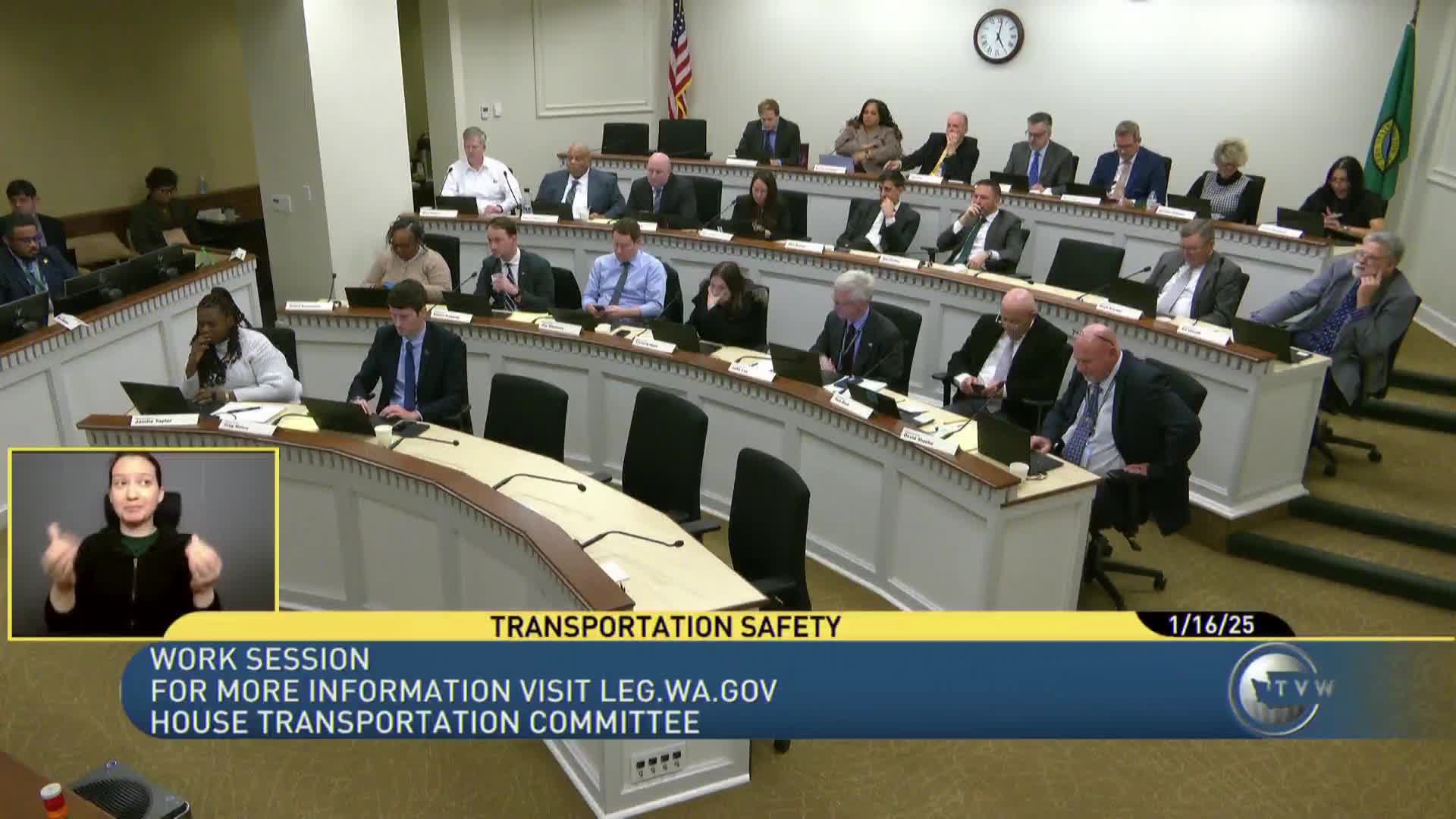Traffic Safety Commission: 2023 fatalities rose to 809; agency unveils updated Target Zero plan
January 16, 2025 | Health & Long Term Care, Senate, Legislative Sessions, Washington
This article was created by AI summarizing key points discussed. AI makes mistakes, so for full details and context, please refer to the video of the full meeting. Please report any errors so we can fix them. Report an error »

Shelley Baldwin, acting director of the Washington Traffic Safety Commission, told a legislative committee that Washington recorded 809 traffic fatalities in 2023 and that the state’s fatality rate exceeded the national rate for the first time since 1980.
Baldwin said the commission’s data show a complex set of contributing factors: an increase in impairment‑involved crashes, a rise in speeding and distracted driving, and a marked increase in fatalities involving young drivers and pedestrians. Baldwin and Mark McKechnie, the commission’s external relations director, presented survey results and multiyear trends to support the agency’s updated statewide strategic highway safety plan—Target 0—which adopts a safe‑system approach and centers equity in identifying priority strategies.
The commission presented several headline findings: a 50% increase in fatalities between 2019 and 2023 (the commission described 2023 as the first year since 1980 that Washington exceeded the national fatality rate), a 75% increase in total fatalities over the past decade, and record pedestrian fatalities in 2023. Baldwin said the agency’s final verified fatality count for 2023 is 809.
McKechnie described a statewide, anonymous road‑user survey with more than 21,000 unduplicated responses over two years that tracks self‑reported behaviors and perceptions. The presenters emphasized speeding—about 70% of respondents reported driving 10 or more miles per hour over the limit at least once in the previous 30 days—and noted that self‑reported impairment rates are lower (around 5%), even though impairment was involved in roughly half of 2023’s fatal crashes.
The updated Target 0 plan uses a safe‑system framework—safer people, safer vehicles, safer speeds, safer roads, and improved post‑crash care—and adds a focus on safer land use in Washington. Equity work informed the plan: Baldwin highlighted that American Indian/Alaska Native populations in the state experience a per‑population fatality rate about four times higher than other groups.
The presenters cited national research on how blood alcohol concentration increases crash risk and described age as a multiplier of that risk; McKechnie cited a 2016 NHTSA study and a separate study (Boas) that show younger drivers face higher mortality risk at the same BAC levels.
Baldwin and McKechnie said the commission will use the plan to guide investments, grant programs, and enforcement partnerships across the state. The presentation concluded with a request to lawmakers for continued engagement and resources to implement Target 0 strategies.
Baldwin said the commission’s data show a complex set of contributing factors: an increase in impairment‑involved crashes, a rise in speeding and distracted driving, and a marked increase in fatalities involving young drivers and pedestrians. Baldwin and Mark McKechnie, the commission’s external relations director, presented survey results and multiyear trends to support the agency’s updated statewide strategic highway safety plan—Target 0—which adopts a safe‑system approach and centers equity in identifying priority strategies.
The commission presented several headline findings: a 50% increase in fatalities between 2019 and 2023 (the commission described 2023 as the first year since 1980 that Washington exceeded the national fatality rate), a 75% increase in total fatalities over the past decade, and record pedestrian fatalities in 2023. Baldwin said the agency’s final verified fatality count for 2023 is 809.
McKechnie described a statewide, anonymous road‑user survey with more than 21,000 unduplicated responses over two years that tracks self‑reported behaviors and perceptions. The presenters emphasized speeding—about 70% of respondents reported driving 10 or more miles per hour over the limit at least once in the previous 30 days—and noted that self‑reported impairment rates are lower (around 5%), even though impairment was involved in roughly half of 2023’s fatal crashes.
The updated Target 0 plan uses a safe‑system framework—safer people, safer vehicles, safer speeds, safer roads, and improved post‑crash care—and adds a focus on safer land use in Washington. Equity work informed the plan: Baldwin highlighted that American Indian/Alaska Native populations in the state experience a per‑population fatality rate about four times higher than other groups.
The presenters cited national research on how blood alcohol concentration increases crash risk and described age as a multiplier of that risk; McKechnie cited a 2016 NHTSA study and a separate study (Boas) that show younger drivers face higher mortality risk at the same BAC levels.
Baldwin and McKechnie said the commission will use the plan to guide investments, grant programs, and enforcement partnerships across the state. The presentation concluded with a request to lawmakers for continued engagement and resources to implement Target 0 strategies.
View full meeting
This article is based on a recent meeting—watch the full video and explore the complete transcript for deeper insights into the discussion.
View full meeting
